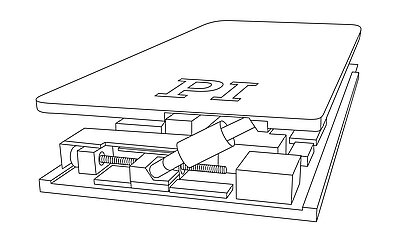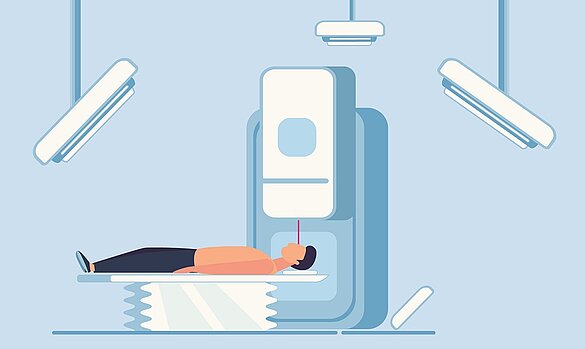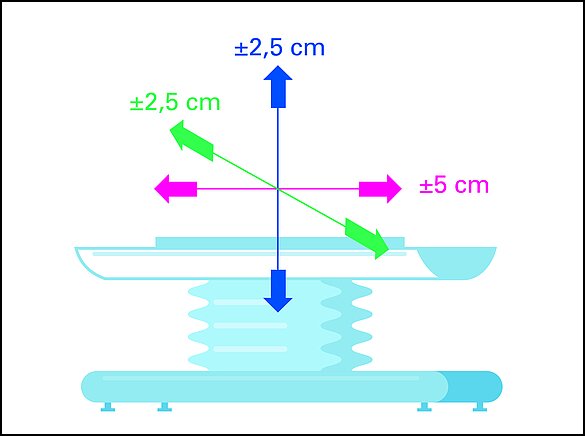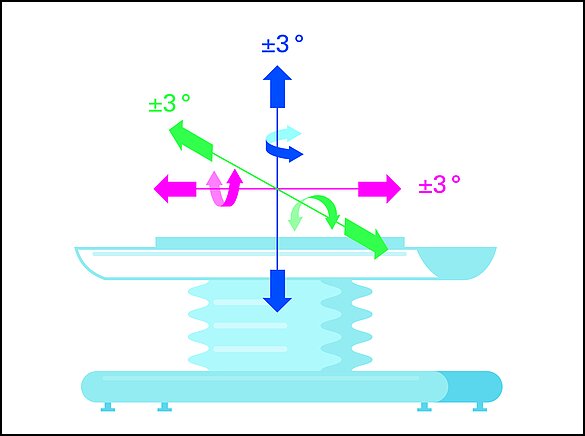Precise Positioning of Patients for Gentle Treatment
Chemotherapy, surgery, and radiotherapy are the three basic treatments for cancer. Which one of these is used, depends on several factors. In addition to individual circumstances, the type, size, and position of the tumor are decisive for the chances of success of the treatment. Possible side effects and the acceptance of the treatment type by the patient also play an important role.
For many types of tumor, radiotherapy shows good chances of success and a high acceptance level. External, internal, and systemic methods for radiotherapy exist.
External Radiotherapy Requires Precise Alignment
External radiotherapy is applied mainly to tumors in the head, lungs, breasts, and prostate. In this case, a particularly precise alignment of the patient is required in order to ensure that the radiation only hits the tumor and causes as little damage as possible to the surrounding tissue. The average diameter of a human cell, that is, between 30 µm and 100 µm is the target size for accuracy so that affected cells only are radiated.
Image-Guided Radiotherapy
Today most radiotherapy systems (e.g. so-called linear accelerators – in short, LINAC) work in the Image-Guided Radiotherapy mode (IGRT-mode). This means, one or several methods are used to measure the current position of the patient and the tumor before and during radiation treatment. These methods include:
The aim of these methods is a patient-friendly, frameless stereotactic radiosurgery (SRS), e.g. of brain tumors.
Based on the images taken previously, the patient is positioned precisely in LINAC devices. In this case, the patient couch (surgery table) plays a key role in the entire process. By superimposing all different images, the position of the patient is specified (in relation to the 3D recorded tumor data and also in relation to the radiation source). Before the actual treatment begins, the couch moves the patient to the correct position.
In some cases, the surgery table has to correct the position of the patient even during radiation. This depends particularly on the type and position of the tumor and on the motion data of the closely monitored patient. In addition to the required precision in the submillimeter range, the ability to carry loads of up to 200 kg or even more is also necessary.
In order to optimally position the patient and the tumor, patient couches with six degrees of freedom in motion are ideally suited. Besides protection of healthy tissue, the positioning can be done quickly, thus reducing the overall time needed for the therapy.
Motion and Positioning Solutions from PI
For this highly specific task, PI offers multi-axis, parallel-kinematic, high-precision positioning solutions – the so-called hexapods.

Hexapods, as the denomination unveils, are motion platforms based on six struts with variable length. They all act together on a platform and so make movements in six degrees of freedom possible. PI has a decade-long experience with the design and manufacturing of hexapods. A huge variety of models have been developed up to now, reflecting customer needs with respect to positioning precision, speed, and dynamic of motion, pay-load (from a few grams to several tons), size, and shape. Besides their compact design, the precision of hexapods in comparison to stacked stages when following given motion trajectories is especially high. Because of the joint guidance of the motion platform, errors in individual axes cannot add up – parallel kinematics. Therefore, hexapods are perfectly suited to positioning patients for radiotherapy.






